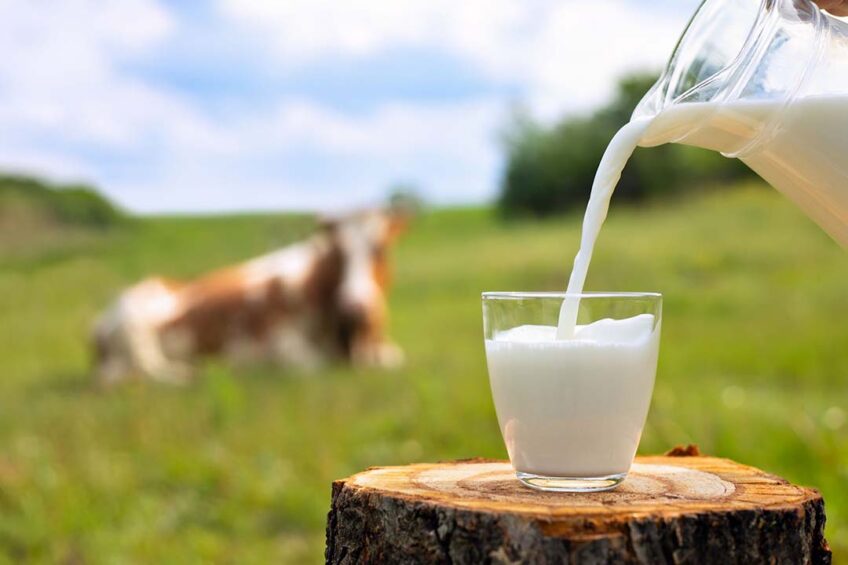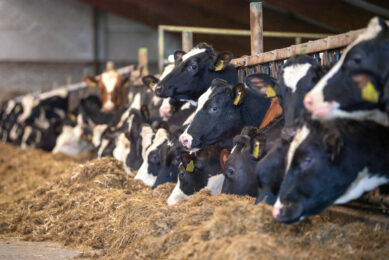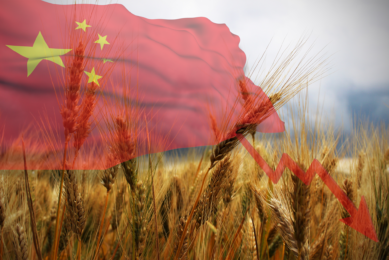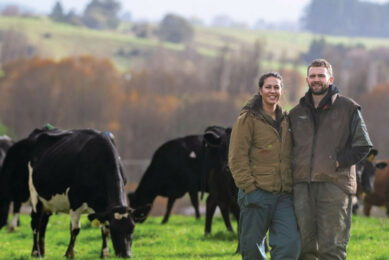Market watch: From Australian milk prices to China’s dairy demand

Australian farmgate milk prices will ease from record highs during this season, according to the Australian Agriculture Outlook of the Rural Bank. In 2023, the lowest Australian milk production in 30 years drove competition between processors to secure supply. Processors offered an average of a record high AUS $9.50 (US$6.47) to AUS$9.80 (US$6.68) per kg milk solids in 2023.
The Rural Bank expects that production will remain tight and competition to secure supply will support opening farmgate bids in Australia. But the disconnect between local farmgate and global dairy prices means processors are unlikely to maintain current prices.
The bank anticipates opening farmgate prices will be well under AUS$9 (US$6.13) per kg MS, and likely to be in the AUS$8.00 (US$5.45) to AUS$8.50 (US$5.79) range.
Australian milk production and consumption
Australian milk production in 2023-2024 is forecast to stabilise at around 8.0 to 8.1 billion litres. Milk production in the first quarter of 2023-2024 is on par with last season’s 676 million litres, Rural Bank says. “However, it is 5.6% below the average of the past 5 years. Production in 2022-2023 fell 5% year on year to a 30-year low of 8.139 billion litres.”
While there is some variability in trends according to product, consumption of dairy products in Australia remains robust. Dairy Australia’s In Focus 2023 report shows per capita milk consumption has declined 8.4% since 2018-2019. However, the Australian consumption of around 90 litres per person in 2022-2023 is high in comparison to consumption in other developed countries. In the same period, cheese consumption has increased by 11.1% to an average of 15 kg per capita.
Lower global demand and weaker global prices have slowed growth in major producing nations, Rural Bank emphasises. Milk production in the EU is expected to fall marginally in 2023-2024. However, the slight increase in production from the US, New Zealand, Argentina, and Brazil makes up for this, Rural Bank says. The combined growth of major dairy exporting countries is not expected to exceed 1% year-on-year.
China and dairy imports
Current global supply is sufficient to meet demand, which remains lacklustre, the bank says. China has typically been the world’s largest importer of dairy products. USDA statistics show around 28% of global dairy imports go to China.
Recently, China has expanded its domestic production to reduce reliance on imported products. This resulted in China holding an oversupply of whole milk powder (WMP) and skim milk powder (SMP) stocks. The lack of Chinese demand on the global market has eased competition for supply. This has given major buyers in North and Southeast Asia more flexibility in being able to purchase during price lulls. Tepid demand is expected to continue through 2024 until Chinese demand picks up.
Dairy prices ended 2023 strong on the Global Dairy Trade (GDT) on 19 December. The GDT price index gained 2.3%, with an average price of US$3,442 per tonne. The price of whole milk powder was up 2.9% to US$3,258 per tonne. Cheddar was up 6.9% and butter was up nearly 10%.
New Zealand dairy products
All New Zealand dairy products can now enter China duty-free because of the removal of tariffs on milk powder. The removal is part of a New Zealand-China Free Trade Agreement. According to Trade and Agriculture Minister Todd McClay, this will deliver NZ$350 million (US$220.5 million) worth of additional revenue.
China is New Zealand’s largest trading partner. Annual dairy exports to China have averaged 1.4 million tonnes, worth about NZ$8 billion (US$5.04 billion) each year over the past 3 years, around half of which was milk powder, according to official data.
Fonterra and Nestlé have confirmed they are going to support farmers with sustainability payments. A new agreement will see Nestlé fund an additional payment to farmers who achieve one of 3 levels of Fonterra’s ‘The Co-operative Difference’ framework during the 2023-2024 season. Fonterra expects the additional payment to be about 1 to 2 NZ cents (0,63 to 1.26 US cents) per kg of milk solids.
Nestlé has sourced dairy from New Zealand for well over a hundred years, Nestlé New Zealand CEO Jennifer Chappell says.
Join 13,000+ subscribers
Subscribe to our newsletter to stay updated about all the need-to-know content in the dairy sector, two times a week.










